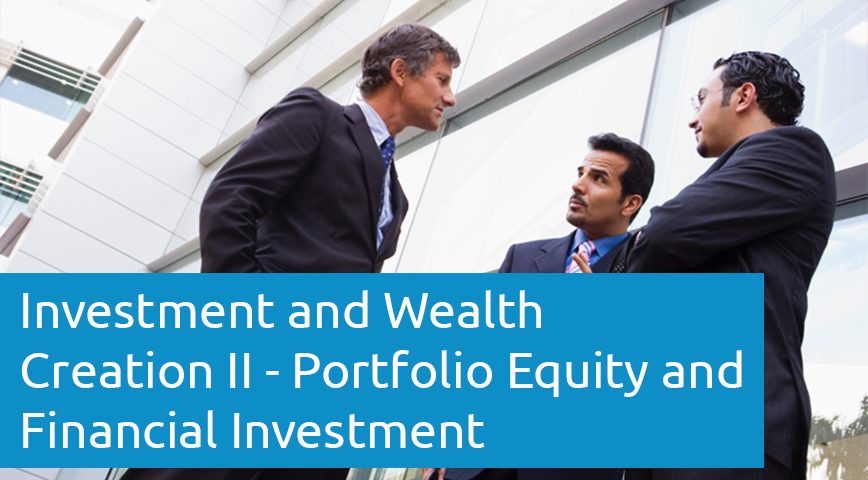Investment and Wealth Creation ll – Portfolio Equity and Financial Investment
“Past performance does not equal future returns..” – anon.
Portfolio Equity and Financial Investment
These thoughts have been prepared in note form to provide a basis for discussion for CEOs, senior executives and those who own their own business. Each individual should review their own circumstances and seek their own advice before taking action.
The paper # ll follows on from a summary paper #1 presented in Dec 2011.
Speculation is not investing. “Traders” may not find this of interest !
Some History and Perspective – Shares
Global stock markets were valued at approx US$63 trn in Oct 2007. This had been reduced to US$28trn by Mar 2009. It has subsequently ( early 2012 ) regained most of the losses. The Global long term growth in the MSCI has been a nominal return of 11% p.a. ( 8% capital growth and 3% dividends ).
The Tokyo stock market peaked in 1989 and is still 75% below that level after more than 20 years.
The USA stock market has grown over 200 years at a real rate of % pa, Over the last 50 years at a real rate of % pa, and over the last 10 years at Nil %.... The compound real return has been generated 2/3rd by dividends ( 4.1% ) and 1/3rd by economic growth. The mean cycically adjusted mean p/e 10 ratio over 100 years has been 15. The highest p/e was 44 in 1999. The lowest p/e was 5 in 1920.
The Australian stock market has grown over 75 years at a real rate of % pa ( nominal 11.8% ), over the last 20 years at a real rate of %pa ( nominal 13.2% ) and over the last 10 years at %pa.
The Australian market has a cyclically adjusted mean p/e 10 ratio over 100 years of approx 15. The EBITDA margins for ASX 50 companies has averaged 16.5 %. The share of wages has averaged % over the last ?? years.
Real returns in both the USA and Australian markets are shown above as averages. This conceals long periods of secular bear markets with growth close to Nil and long periods of secular bull markets with growth between 13% and 14% p.a.
The entry price for long term rewards has a critical effect on performance. Purchasing shares when average p/e ratios are >23 generally have produced no growth over the next 10 years. Purchasing shares when p/e ratios are <10 generally have produced investment growth of 12% to 15% p.a.
p/e ratios are influenced by inflation. High inflation has historically seen p/e ratios <10. Low inflation <4% has increased p/e ratios to 15 to 20.
Some History and Perspective – Bonds and Fixed Interest
The USA bond markets have grown at
Bob Farrel’s 10 Market Rules
- Markets tend to return to the mean
- Excesses in one direction will lead to an opposite excess in the other
- There are no new eras – excesses are never permanent
- Exponential rapidly rising or falling markets usually go further than you think...
- The public buys the most at the top and the least at the bottom
- Fear and greed are stronger than long term resolve
- Markets are strongest when they are broad and weakest when they narrow to a handful of blue chips
- Bear markets have three stages, sharp down, reflexive rebound, and drawn out fundamental downtrend
- When all the experts and forecasts agree – something else will happen
- Bull markets are more fun than bear markets.
Book ……. - Bob Farrel – date
Take aways and other Considerations
Modern Portfolio Theory ( MPT ) doesn’t work well in todays world. Buy and hold may be the right strategy for long term institutional investment but many of us cant wait that long. There have been periods in the last 50 years where markets have had a nil return for periods of more than 10 years.
Diversification of investment is critical. The global stock markets are interconnected as we saw in 2009. Diversification needs to be considered as different segments and different asset classes. Consider the spread of currency investment and the market where the earnings are made.
Investment advisors are useful but do not rely on them for advice on how to profit ( Benjamin Graham ).
Emotion drives the stock market. ( Prof. Robert Shiller )
Cu
Blogger - Pandora 101




